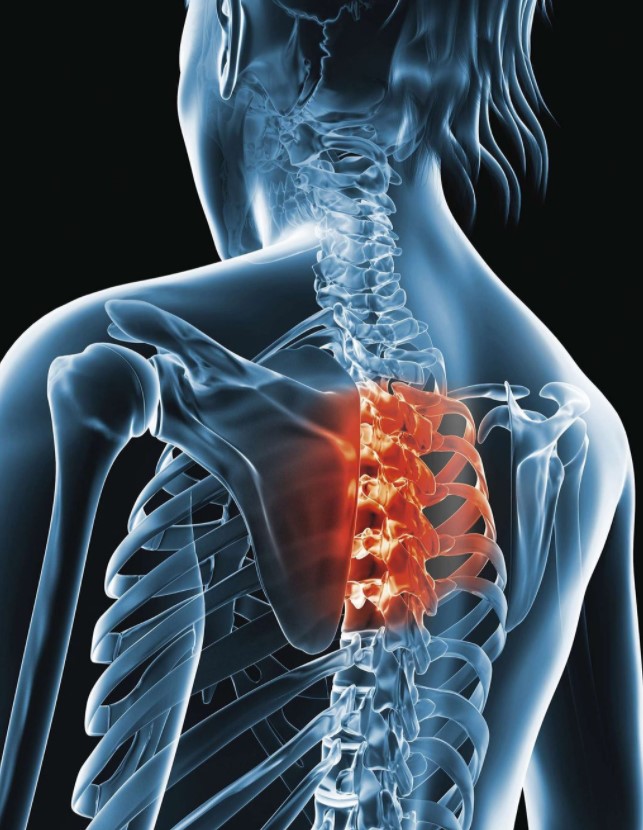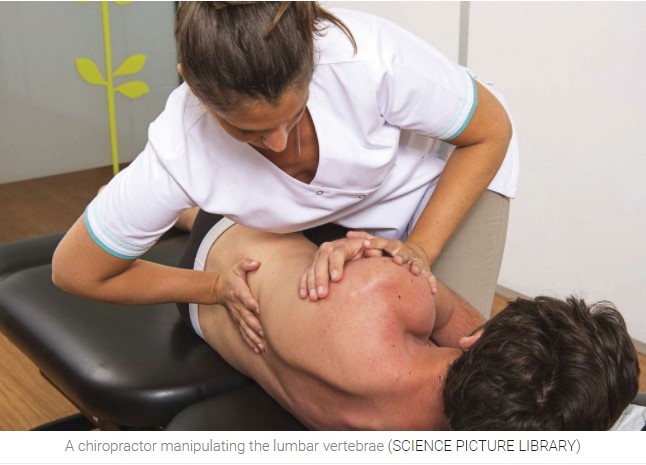Chiropractic Therapy
In Chiropractic Therapy, many of us get a bad back from time to time. It’s the most common complaint among people who seek medical help. So, where do these people go?
According to research, a large number of Americans with back pain seek treatment from a chiropractor.
Chiropractors apply pressure to the spine, usually with enough force to produce the characteristic cracking or clicking sounds people associate with the practice.
It’s thought to come from the (painless) creation and popping of bubbles in the fluid that lubricates our joints.
Some patients fear the sound. Others relish it as the audible relief of stiff, tight, or sore muscles.
Chiropractic therapy has been around for over 100 years. Daniel David Palmer came up with the concept in the late 19th century after he met janitor Harvey Lillard, who suffered from impaired hearing for 17 years.
Palmer claimed that he restored Lillard’s hearing by moving a misaligned spinal bone, or vertebra, back into its normal position.
To Crack Or Not To Crack
Shortly after this, he realigned another man’s vertebra, reputedly helping to alleviate his heart trouble.
Palmer and his co-believers maintained that `subluxations, which they described as slight misalignments in the vertebrae, were the cause of all health-related problems.
This was due to the subluxations causing interference with the flow of innate intelligence (II) – energy or force within the body.
Some chiropractors claim that this undetectable force is responsible for all health complaints.
Many reviews and studies have found inconclusive evidence for the effectiveness of spinal manipulation for low back pain.
But there’s no scientific evidence to support the existence of such subluxations or innate intelligence.
In conventional medicine, the term subluxation is used to describe a partial dislocation of a joint.
The bones meeting at that joint are moved away from their normal position by trauma, such as the fall’s impact.
X-Rays Findings in Chiropractic Therapy
These show up in x-rays but would not usually be treated by manipulating the joint.
“The chiropractic term subluxation is different and, although some chiropractors claim to be able to see them in x-rays,
there seems to be no clear consensus as to what they look like, with different practitioners often seeing incredibly varied subluxations in the same spinal x-ray;
says former psychiatrist Stephen Barrett, who is now a science writer and co-curator of the website Chirobase, which he runs with retired chiropractor Sam Homola.
Opinions on what to treat differ among chiropractors – and this affects the way they practice.
The chiropractic community has split into two camps – those that limit their treatments to conditions commonly associated with the musculoskeletal system, the framework of bones and muscles that make up the body – and those that do not.
The former is often considered to work more in line with conventional medical beliefs and evidence-based practices.
The latter is more likely to be thought of as an `alternative’ in their practice.
So the big question is – does chiropractic therapy work? The answer, of course, depends on two things: who you ask and what you ask them.
In Search Of Evidence
In 2010, the General Chiropractic Council – the body that regulates all chiropractors in the UK funded a review into the effectiveness of manual therapies in the UK.
It concluded that spinal manipulation and mobilization have moderate to mild benefits in adults suffering from some types of back and neck pain.
But chiropractors are not the only people to offer spinal manipulation. Primary care physicians, physical therapists, and osteopathic doctors do it, too.
So why do 40 percent of North Americans choose to go straight to a chiropractor, compared to 34 percent who would visit a primary care physician, and just one percent who would go to a physical therapist or occupational therapist?
Chiropractors increasingly offer a ‘one-stop-shop,’ says Associate Professor Michael Schneider, from the Department of Physical Therapy, School of Health and Rehabilitation Sciences at the University of Pittsburgh, in the US.
Studies and Research on Chiropractic Therapy
“Primary care physicians would diagnose low back pain and are likely to offer some form of medication to alleviate pain or referral to another provider for non-pharmacological treatment.
A chiropractor provides both the roles of diagnosis and treatment?’ Schneider has worked as a chiropractor for over 30 years.
In February 2015, he published a study in the journal Spine, which concluded that hands-on manipulation dealt with low back pain more effectively in the short term than what he deemed “usual medical care.”
where physicians advise patients to stay physically active and prescribe over-the-counter medication.
But other reviews and studies have found inconclusive evidence for the effectiveness of spinal manipulation for low back pain or suggested that there is no apparent difference in patient’s benefit seen from spinal manipulation,
compared to other therapies including exercise, no therapy, or the use of non-steroidal anti-inflammatory drugs (NSAIDs), such as ibuprofen.
Guidelines
In 2007, the American Pain Society (APS) and American College of Physicians jointly published clinical practice guidelines on diagnosing and treating low back pain.
These recommend “nonpharmacologic therapy with proven benefits,” including spinal manipulation, for low back pain.
But the guidelines do point out that this is a “weak recommendation,” and APS spokesperson Steve Majewski said:
“whether a recommendation is weak or strong is based on the quality of the evidence reviewed.”
Who carries out a study and how they do it affects this quality of evidence – a view held firmly by Edzard Ernst, Emeritus Professor of Complementary Medicine, the University of Exeter:
“Some studies are prone to bias. A good literature review must include some critical assessment of the quality of the methods used.
There is evidence that studies authored by chiropractors have more positive conclusions than those written by independent academics, as there is a conflict of interest.”
In 2006, Prof. Ernst carried out a systematic review of spinal manipulation, where he analyzed collective data from sixteen papers.
The verdict – they failed to show that spinal manipulation is an effective treatment for any condition.
The seven uppermost vertebrae manipulations can result in an artery supplying the brain to tear, causing a stroke type.
.
The Risks
Ineffective is acceptable, but ineffective and risky would cause concern – so what are the side effects?
The most common side effect of spinal manipulation is short-term soreness in the muscles around the manipulated area.
This is no different from feeling a bit sore after the chiropractic massage therapy. But there are more severe risks.
“About half of all chiropractic patients suffer from mild to moderate side effects, but, as they usually last only two to three days, we might accept them as a necessary step on the way to getting better,” says Prof. Ernst.
“But much more worrying are the reports of serious complications associated with neck manipulations.”
While there are reports of dislocations and fractures, more concerning are the causes of stroke.
Risk Vs. Gain
Manipulations of the seven uppermost vertebrae can result in an artery supplying the brain to tear, causing a type of stroke called a vertebral artery dissection (VAD), as shown in studies such as one by University of California neurologists.
This can lead to permanent disability or even death. “Several hundred such instances have been reported,” says Prof. Ernst.
“But as there is no effective monitoring system, their true number could be much higher.”
But Schneider points out that VAD stroke is rare and says patients need to consider the risk against benefit when deciding upon a treatment option for neck pain.
“Risk is a relative thing. While a stroke is a very significant risk, it is a shallow incidence risk that needs to be weighed against the manipulation benefits.
For low back pain, the benefits seem to outweigh the risks, but if a patient is being treated for a misdiagnosed condition or one that has no proven benefit, then the risk appears more significant.”
Healing By Placebo Effect
The debate about the merits of chiropractic therapy gets murkier still when we move beyond the spine.
Some chiropractors claim to treat asthma and infant colic conditions, which aren’t problems commonly associated with conventional medicine with the musculoskeletal system.
“If the risks outweigh the benefits, the treatment cannot normally be recommended for routine care,” says Prof. Ernst.
“In the case of chiropractic therapy, the evidence suggesting that it is effective is limited to very few conditions, and even there, it is too weak to claim it is of proven effectiveness.
It follows that the risk/ benefit balance of chiropractic manipulations is rarely encouraging.”
But, despite the mainstream skepticism, vast numbers of Americans still visit chiropractors every year. So what’s the benefit?
It could simply be an increasing desire to avoid pills and a placebo effect (see page 89), linked to a caring practitioner’s one-on-one attention.
“Pain is linked to fear,” says Jo Marchant, a science writer and author of Cure: A Journey into the Science of Mind over Body.
“Stress and fear create biological changes in the brain that amplify our symptoms. Trials suggest receiving empathetic care and having positive expectations for treatment helps to reverse this.
Psychological influences such as empathy, social interaction, and expectation create biological changes that ease the pain.
So it’s not an illusion or a change in perception; the pain is reduced through just the same physical mechanism as when you take a painkiller.”
References:
- General Chiropractic Council
- School of Health and Rehabilitation Sciences at the University of Pittsburgh
- American Pain Society
- University of California









